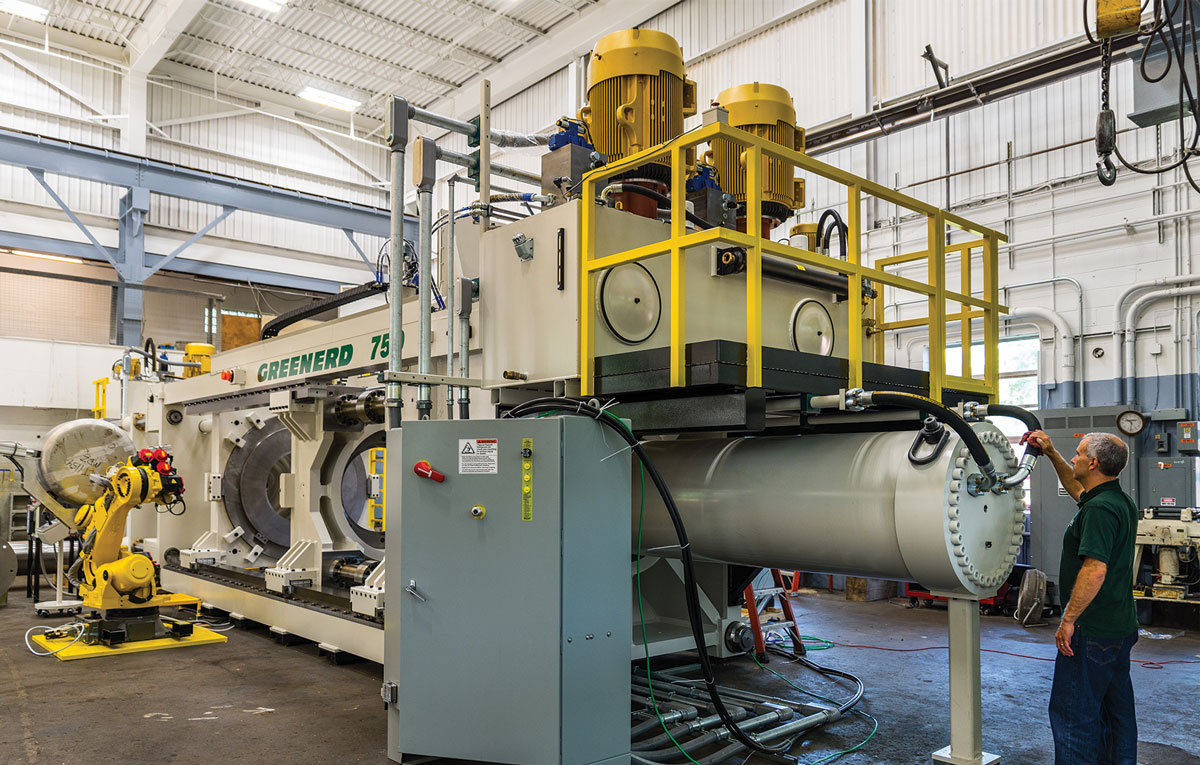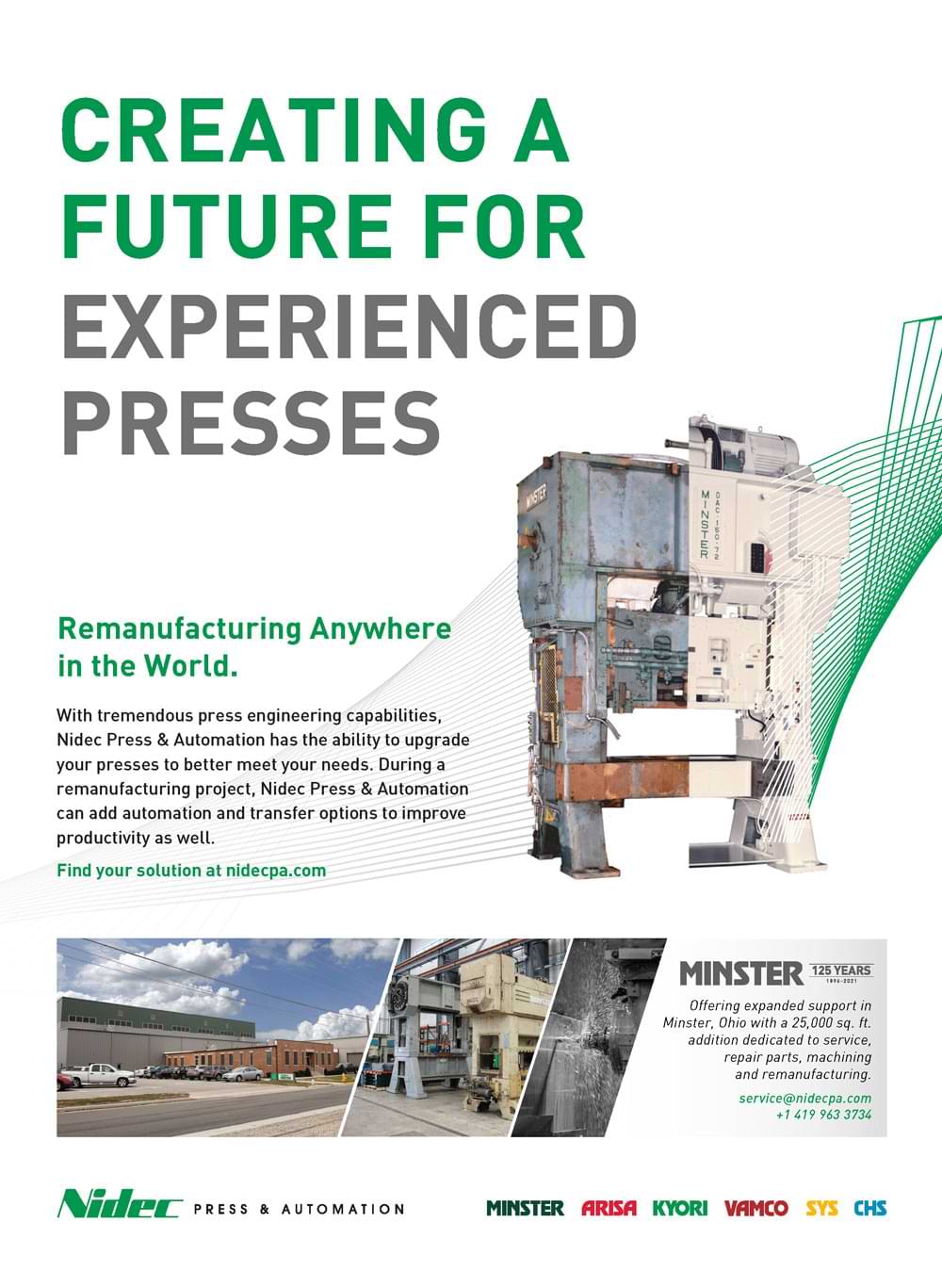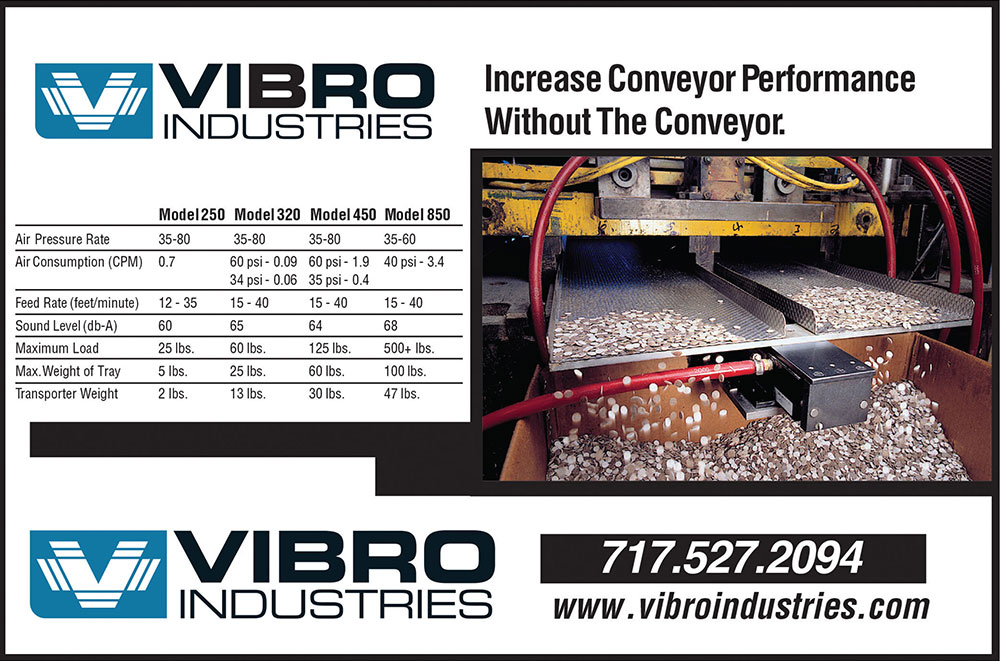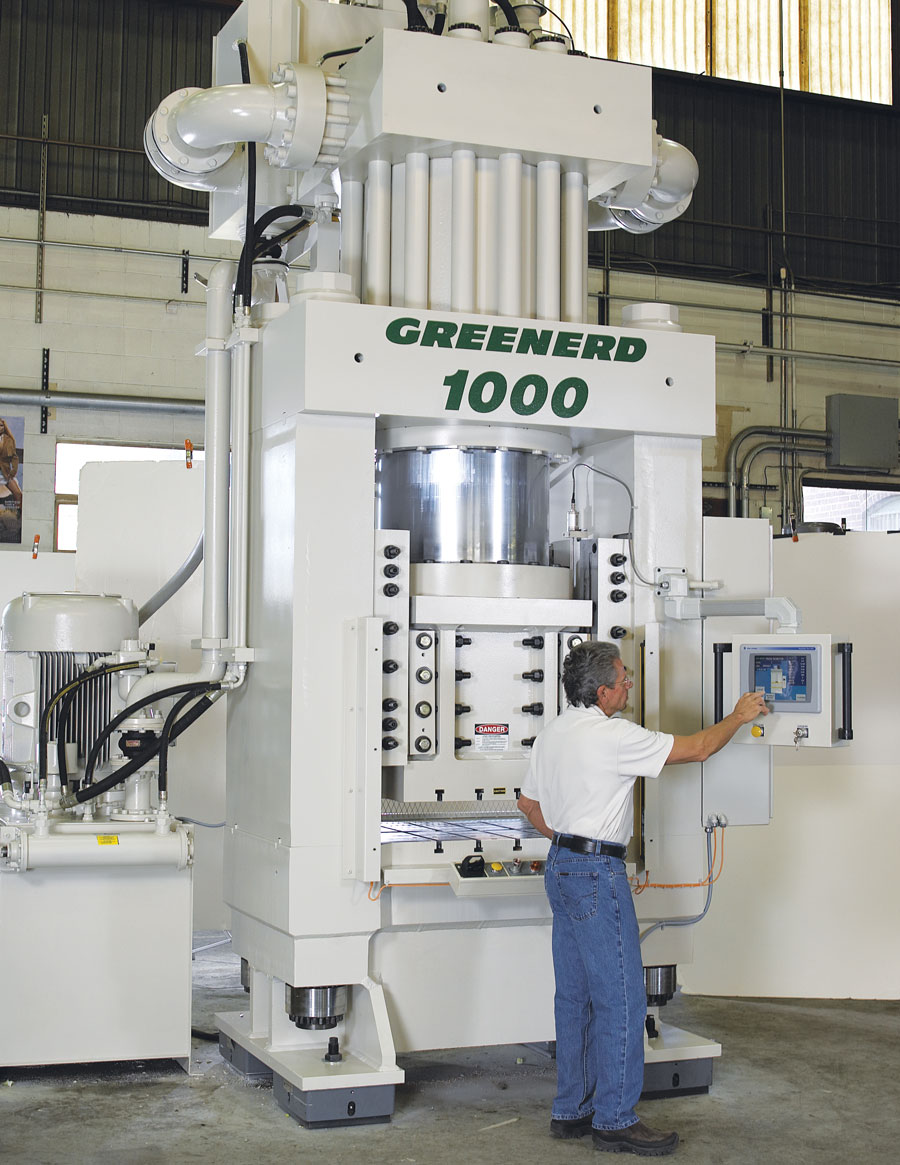
This Greenerd straight-sided press, left, is gib-guided to counter the effects of off-center loading. Above, this custom 750-ton horizontal four-post gib-guided hydraulic press is integrated with two 6-axis robots that are programmed to prompt the press to perform multiple operations.

utomated technologies that can improve quality, reduce overhead and solve difficult problems have always been in demand,” says Mike Josefiak, mechanical engineer for Greenerd Press & Machine Co. “We are seeing a new class of small to mid-size manufacturers taking advantage of these technologies by relying on equipment OEMs to give them solutions that are tailored to their production requirements.”
In addition to manufacturing precise, durable hydraulic presses, Greenerd specializes in providing full automation and integration services. The press builder is able to tie in both upstream and downstream processes to create turnkey press systems.
“Once we sit down with a customer, we learn as much as we can about their business, applications and objectives. With that information we can design and build a press system that integrates applicable technologies and combines multiple tasks into one project. Accountability for full implementation of the system from design to installation rests with us,” says Josefiak.
The value of partnering with a supplier like Greenerd has increased exponentially for fabricators trying to balance inventory and production flow against supply chain disruptions and growing order sizes.
Demand surges and labor shortages continue to plague manufacturers, “especially in rural areas. These events have given long-planned process improvement projects momentum,” Josefiak notes. “Taking time to improve in-house capabilities and automate simple tasks can help manufacturers meet these new market realities.”
High turnover coupled with decades-old production strategies that call for skilled labor have also proved problematic. “Adoption of new technologies can reduce the number of manual tasks by improving a new machine’s documentation and process controls, for example,” he continues, “and the training needed to scale up production is simplified.”
Greenerd is following its own advice. The press supplier continues to invest in technologies and gain experience. Features such as material tracking, machine vision, final inspection reporting and robotic material handling are being paired with presses “right-sized” for specific applications. “Combining available technologies in a meaningful way improves quality, increases productivity and it can be used to solve the most difficult problems,” says Josefiak.
With speeds that exceed 2,000 in. per minute, this transfer line has three stations which draw, re-draw and punch the component.
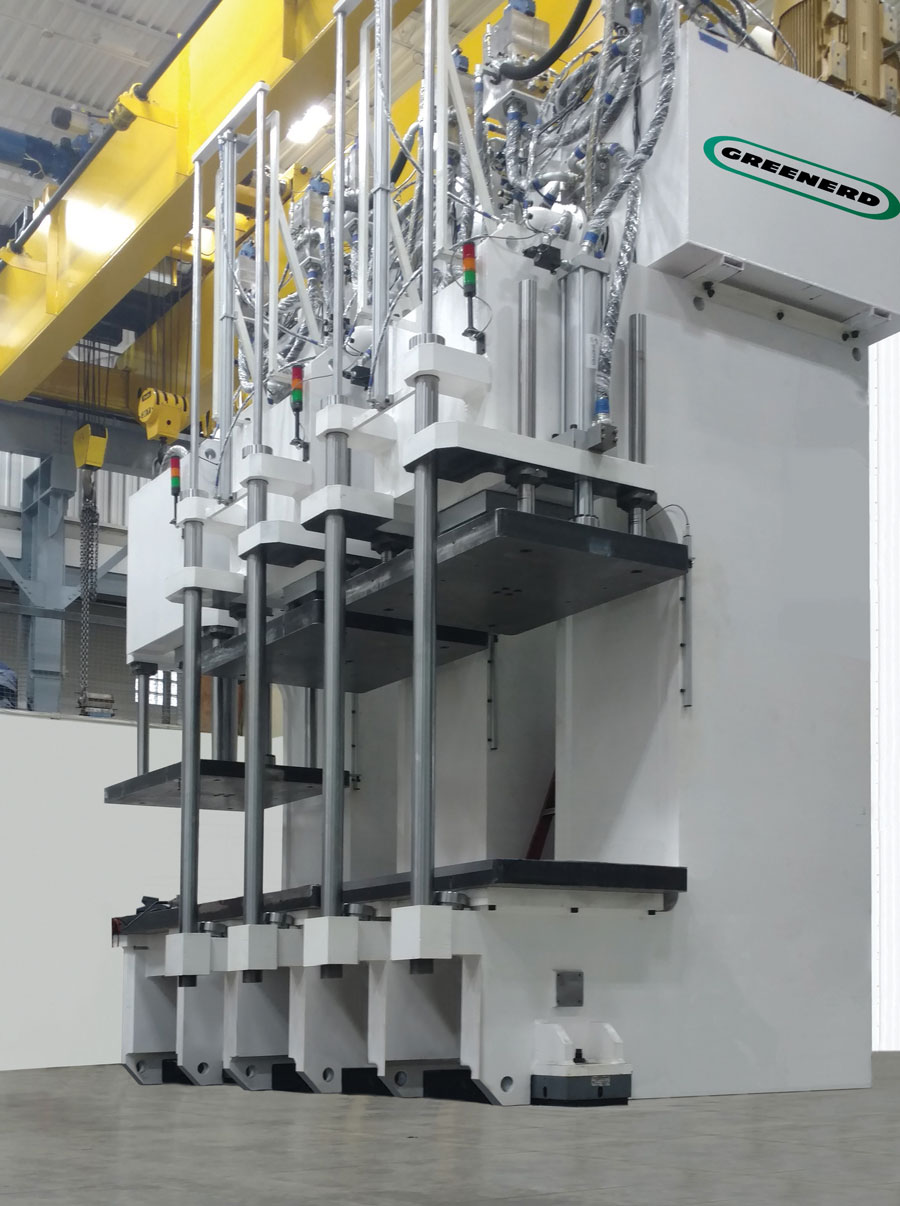
 Taking the extra time to make the right choices pays huge dividends.
Taking the extra time to make the right choices pays huge dividends. 
Greenerd earned its reputation by doing the hard things well. The company tailored a variety of large-capacity complex press systems for most industrial sectors including aerospace, defense and automotive. Its design principles translate to a wide range of applications.
For example, a high-speed press paired with advanced controls can improve cycle time and accuracy. Dynamic platen leveling allows a press system to maintain 0.002 in. parallelism during compression molding—an operation that typically requires material to be placed in an open, heated mold cavity. Heated platens designed with active control hold temperatures to within 5 degrees Fahrenheit across the working areas while monitoring systems track each cycle’s progress to ensure high-quality parts.
The ability to manage information continues to be a critical element for digitized manufacturing environments. Process management records data and provides direct inspection and remote process control. Options such as auxiliary equipment, guarding and material handling equipped with robust communications systems can be plugged into expandable platforms. The software and tools to support these systems is also extensive.
“This is where partnering with a company like Greenerd makes sense,” says Josefiak. “We can incorporate the right mix of tools in a design/build to help manufacturers boost the productivity of their operations. We’ve been building presses for more than 130 years. We don’t just provide new capabilities; we take deep dives into the process itself. By choosing the right technologies, paying attention to engineering details and drawing on our deep understanding of how manufacturers function, we’re able to develop a custom solution.
“Standard products may meet press requirements on paper, but an open review often reveals opportunities for improvement,” he says. “These presses are a long-term investment. Taking the extra time to make the right choices pays huge dividends.”
Greenerd recently designed and built a transfer line for an automaker that has three stations equipped to draw, re-draw and punch components. The line comprised two 250-ton draw presses and a 150-ton punch press. With speeds exceeding 2,000 in. per minute, the configuration is ideal for high-volume automotive work.
Another project, also for an automotive customer, called for a custom 750-ton horizontal four-post, gib-guided hydraulic press integrated with two 6-axis robots. The robots have been programmed to prompt the press to perform multiple operations required to produce a heavy-duty, high-pressure cylinder tank.
